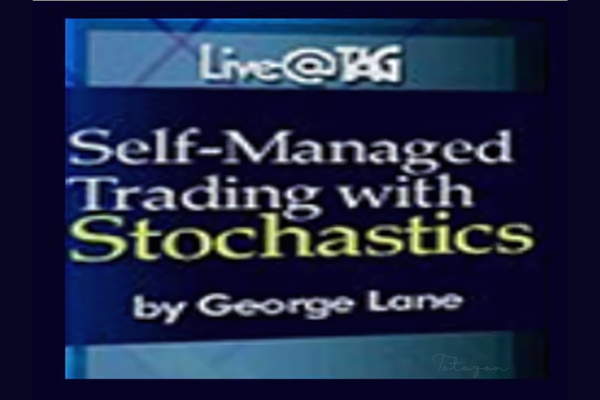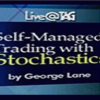Self-Managed Trading with Stochastics By George Lane
$4.00
File Size: Coming soon!
Delivery Time: 1–12 hours
Media Type: Online Course
Self-Managed Trading Stochastics Lane Guide
Introduction
Self-managed trading empowers individual traders to take control of their investment strategies. One of the most effective tools for achieving this is the stochastic oscillator, developed by George Lane. This article delves into the intricacies of self-managed trading with stochastics, providing a comprehensive guide to mastering this powerful technical indicator.
Understanding Stochastics
What is the Stochastic Oscillator?
The stochastic oscillator is a momentum indicator that compares a particular closing price of a security to a range of its prices over a certain period. The sensitivity of the oscillator to market movements can be reduced by adjusting the time period or taking a moving average of the result.
Historical Background
George Lane introduced the stochastic oscillator in the late 1950s. Lane believed that the oscillator’s position relative to its range indicated the momentum of the security, with the best signals often occurring when the momentum changes direction.
Components of the Stochastic Oscillator
%K Line
The %K line represents the raw stochastic value for each period. It is calculated as follows: %K=(Current Close−Lowest Low)(Highest High−Lowest Low)×100\%K = \frac{(Current\ Close – Lowest\ Low)}{(Highest\ High – Lowest\ Low)} \times 100%K=(Highest High−Lowest Low)(Current Close−Lowest Low)×100
%D Line
The %D line is a moving average of the %K line, often a 3-period simple moving average, which smooths out the %K line to produce a more reliable signal.
Stochastic Ranges
- 0-20: Indicates an oversold condition.
- 80-100: Indicates an overbought condition.
Applying Stochastics in Trading
Identifying Overbought and Oversold Conditions
Overbought
When the stochastic lines are above 80, it suggests that the security might be overbought and due for a correction.
Oversold
When the stochastic lines are below 20, it suggests that the security might be oversold and due for a bounce.
Generating Buy and Sell Signals
Buy Signals
A buy signal occurs when the %K line crosses above the %D line while both are below 20, indicating a potential upward momentum.
Sell Signals
A sell signal occurs when the %K line crosses below the %D line while both are above 80, indicating a potential downward momentum.
Divergence Analysis
Bullish Divergence
Occurs when prices are making new lows, but the stochastic is making higher lows, indicating a potential upward reversal.
Bearish Divergence
Occurs when prices are making new highs, but the stochastic is making lower highs, indicating a potential downward reversal.
Advanced Strategies with Stochastics
Stochastics and Moving Averages
Combining Indicators
Combining the stochastic oscillator with moving averages can enhance signal accuracy. For example, using a 50-day moving average can help confirm stochastic signals.
Entry and Exit Points
Use stochastic crossovers in conjunction with moving average crossovers to identify optimal entry and exit points.
Multi-Time Frame Analysis
Aligning Time Frames
Analyze stochastics across multiple time frames (e.g., daily and weekly) to confirm signals and improve trading accuracy.
Strategy Example
A buy signal on the daily chart that aligns with an oversold condition on the weekly chart can provide a stronger confirmation for entering a trade.
Stochastics and Support/Resistance Levels
Identifying Key Levels
Combine stochastic signals with support and resistance levels to enhance trade reliability.
Trade Execution
Enter trades when stochastic signals align with bounces off support or rejections from resistance levels.
Benefits of Using Stochastics
Simplicity and Clarity
The stochastic oscillator is straightforward to understand and apply, making it accessible for traders of all experience levels.
Effective in Various Markets
Stochastics can be used across different markets, including stocks, forex, and commodities, providing versatile trading opportunities.
Momentum Insights
The oscillator provides valuable insights into market momentum, helping traders make informed decisions about potential price reversals.
Challenges and Limitations
False Signals
In choppy or sideways markets, the stochastic oscillator can generate false signals. Combining it with other indicators can help mitigate this risk.
Lagging Indicator
As a lagging indicator, stochastics can sometimes be slow to respond to sudden market changes. It’s essential to use it alongside leading indicators.
Tips for Effective Use
Combining Indicators
Always combine stochastics with other technical indicators like RSI, moving averages, or MACD to confirm signals and reduce false positives.
Continuous Learning
Stay updated with the latest trading strategies and continuously refine your skills in using the stochastic oscillator.
Backtesting Strategies
Before applying any new strategy in live trading, backtest it on historical data to ensure its effectiveness.
Conclusion
Self-managed trading with stochastics, as pioneered by George Lane, offers a robust framework for making informed trading decisions. By understanding the components and applications of the stochastic oscillator, traders can enhance their ability to identify potential market reversals and improve their overall trading performance. As with any trading tool, continuous learning and adaptation are key to success.

Commonly Asked Questions:
- Business Model Innovation: Accept the truth of a legitimate business! Our strategy is organising a group buy in which participants share the costs. We use these cash to acquire popular courses from sale pages and make them available to people with limited financial resources. Despite the authors’ worries, our clients love the cost and accessibility we give.
- The Legal Environment: Yes or No The legality of our activity is ambiguous. While we don’t have specific permission from the course authors to resell the material, there is a technicality at work. The author did not specify any limits on resale when purchasing the course. This legal intricacy is both an opportunity for us and a boon for individuals looking for low-cost access.
- Quality Control: Uncovering the Truth
Getting to the heart of the issue – quality. Purchasing the course straight from the sale page guarantees that all documents and resources are the same as those obtained through traditional channels.
However, we distinguish ourselves by going beyond personal research and resale. It is crucial to note that we are not the official course providers, which means that the following premium services are not included in our package:
- There are no scheduled coaching calls or sessions with the author.
- Access to the author’s private Facebook group or web portal is not permitted.
- No access to the author’s private membership forum.
- There is no direct email support available from the author or their team.
We operate independently, with the goal of bridging the pricing gap without the extra services provided by official course channels. Your comprehension of our distinct approach is much appreciated.
Be the first to review “Self-Managed Trading with Stochastics By George Lane” Cancel reply
You must be logged in to post a review.
Related products
Forex Trading
Forex Trading
Quantamentals – The Next Great Forefront Of Trading and Investing with Trading Markets
Forex Trading
Forex Trading
Forex Trading
Forex Trading
Forex Trading
Forex Trading
The Complete Guide to Multiple Time Frame Analysis & Reading Price Action with Aiman Almansoori
Forex Trading
Forex Trading

 Deep Dive Butterfly Trading Strategy Class with SJG Trades
Deep Dive Butterfly Trading Strategy Class with SJG Trades 



















Reviews
There are no reviews yet.